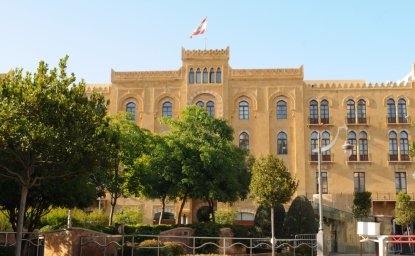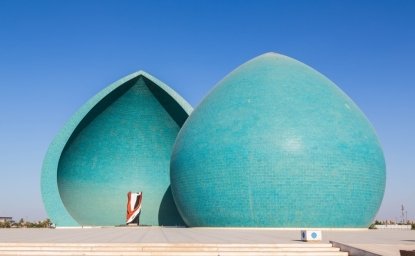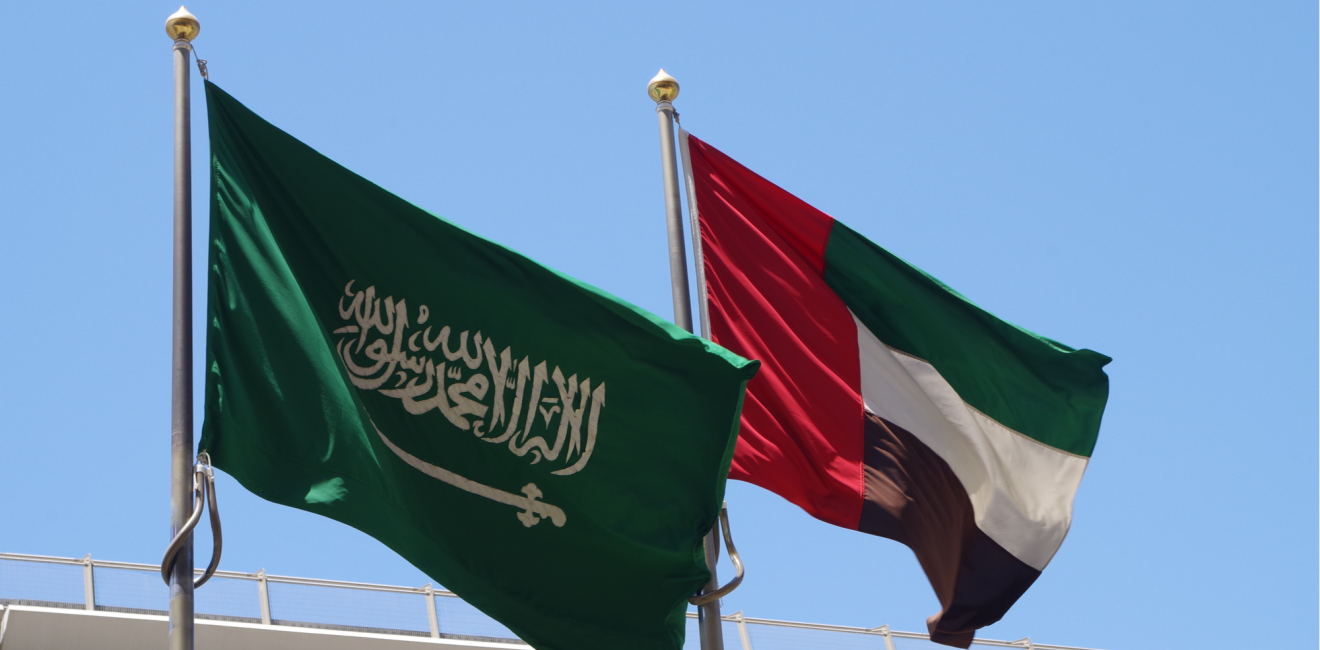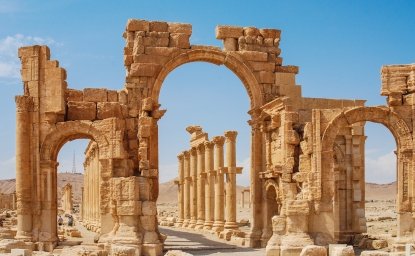The current public rift between Saudi Arabia and the United Arab Emirates over the latter’s oil production quota within the Organization of Petroleum Exporting Countries (OPEC) has come as somewhat of a surprise to the outside world, since the two monarchies have long been viewed as the closest of allies. In fact, they have increasingly become rival allies. The UAE is charting its own course on more and more issues, its demand to produce more oil than Saudi Arabia wanted is only the latest example of their sharpening contest for Arab and global prominence.
Their rivalry has reached all the way to Washington as the UAE, despite its far smaller size and wealth, has proven itself to be a valuable political and military asset for the United States. By contrast, Saudi Arabia, under the mercurial rule of Crown Prince Mohammed bin Salman (MBS), has become a troublesome partner for U.S. policymakers. He is still recovering from the brutal 2018 murder of prominent Saudi journalist Jamal Khashoggi, a deed that the CIA concluded was approved by MBS and has made him an unwelcome guest at the White House.
The origins of the UAE-Saudi rivalry go back twelve years ago when the UAE made its first big challenge to the regional leadership of its big brother over the Gulf Cooperation Council (GCC).
That fact that the UAE has made enormous strides toward replacing Saudi Arabia as Washington’s favored Arab military partner is reflected in the decision of both the Trump and Biden administrations to make the Emirates the first Arab country to receive America’s most advanced fighter jet, the F-35. Meanwhile, the Biden administration has suspended the sale of all offensive American arms to Saudi Arabia because of its alleged war crimes against civilians in the Yemeni civil war.
The origins of the UAE-Saudi rivalry go back twelve years ago when the UAE made its first big challenge to the regional leadership of its big brother over the Gulf Cooperation Council (GCC). Three weeks after the GCC had approved plans in 2009 for a common central bank to be located in Riyadh, the UAE abruptly announced it was pulling out.
The UAE had pressed for the bank to be located in its capital, Abu Dhabi, but the Saudis had insisted on Riyadh by right of the kingdom having the Arab world’s biggest economy by far and the international community’s recognition of its global financial heft. In the midst of the 2008 worldwide economic crisis, the world’s leading economies had voted to include Saudi Arabia in their ranks as the first Arab member of the prestigious G20 group.
The UAE objection killed all hopes for a common GCC bank and currency and made it easier for Oman to openly oppose the late Saudi King Abdullah’s declaration in the aftermath of the 2011 Arab uprisings, that “it was time to move from a phase of cooperation to a phase of union within a single entity.”
Since the death of Saudi efforts to form a European-style common market, the two monarchies have increasingly diverged in their foreign policies even while their leaders have kept portraying themselves as fast friends. Until recently, the de facto UAE ruler, Mohammed bin Zayed (MBZ), was widely described in the Arab and Western press as MBS’s closest advisor and chief mentor.
They jointly led the Arab coalition that invaded Yemen in March 2015 to crush the Iranian-backed Houthi rebels who had taken over two-thirds of the country in a bid to keep it from falling apart. But the war ultimately proved the undoing of their alliance. The UAE first withdrew its military forces leaving Saudi Arabia on its own to cope with a losing struggle with the Houthis. It then backed the southern separatist movement seeking restoration of the North and South Yemen that had existed before their unification in 1990.
Meanwhile, the highly ambitious Saudi crown prince has set out to challenge the UAE as the leading business and transportation center of the Middle East.
The two also ultimately diverged on their policy toward Qatar after imposing in June 2017—together with Bahrain and Egypt—an air, sea, and land blockade of the small gas-rich state over its support for opposition figures from those countries, including the Muslim Brotherhood. The Saudis decided largely on their own to end the blockade under considerable pressure from President Trump and the Pentagon which uses Qatar as the U.S. Central Command’s forward regional headquarters. The UAE reluctantly followed suit.
The two have also gone their separate ways in normalizing relations with Israel. The UAE took the lead in establishing diplomatic relations with the historic Abraham Accords, while MBS, despite promoting an opening to the Jewish state, ultimately demurred due to sharply divided counsels within the Saudi royal family.
Meanwhile, the highly ambitious Saudi crown prince has set out to challenge the UAE as the leading business and transportation center of the Middle East. He has declared that foreign companies operating in Saudi Arabia will have to establish their regional headquarters there to keep their contracts. He has also announced he intends to spend $147 billion to make Saudi Arabia the principal air and sea “logistics hub” for the region, with a high-speed railroad, a new airline and expanded port services.
Now the two rival allies are in conflict over oil policy and face the prospect of becoming open rivals. For two weeks, the UAE delayed a production agreement Saudi Arabia crafted with Russia, a top oil exporter and leader of a group of 10 non-OPEC producers. The so-called OPEC Plus Group of 23 oil producers announced on July 18th they would increase their collective production in stages, adding an additional 400,000 barrels a day each month until the end of 2022. This would restore the entire 9.7 million barrels they had cut to deal with the COVID-19-induced worldwide economic recession.
The UAE, however, got its way in its insistence on a higher baseline OPEC production quota starting in May 2022, adding 332,000 barrels a day from its pre-COVID one of nearly 3.2 million barrels. Both Saudi Arabia and Russia also saw their quotas upped 500,000 barrels a day.
Most striking in this dispute was the UAE’s readiness to challenge Saudi leadership of OPEC.
Most striking in this dispute was the UAE’s readiness to challenge Saudi leadership of OPEC. Saudi Arabia has long led OPEC because of its excess production capacity with an ability to pump 12.5 million barrels a day. Its current production is only around 8.5 million barrels daily. By contrast, the UAE pumps only a little more than a third of that amount.
This first major open split over production quotas is probably a harbinger of an acute rivalry between the two countries over market share as the world demand for fossil fuels shrinks in face of international pressure to replace fossil fuels with renewable sources. Both the Biden administration and the European Union have announced ambitious plans to combat global warming by radically reducing carbon emissions, such as the European plan to end the sale of all gas and diesel-run vehicles by 2035 and reaching a carbon-neutral economy by 2050.
In fact, their battle over market share is already under way. Both the UAE and Saudi Arabia have laid plans to produce more oil before demand wanes and favorable prices drop below the level needed to fill government coffers. The UAE is spending $122 billion to expand its production capacity to five million barrels a day by the end of this decade, while Saudi Arabia has begun expanding its own capacity to produce over 13 million barrels.
The UAE and Saudi Arabia still have a lot in common, from combating Iranian expansionism and Islamist terrorism to defending their thrones and monarchies from pro-democracy activists. The UAE’s de facto ruler, Mohammed bin Zayed, rushed to Riyadh the day after the OPEC Plus agreement to remind MBS of this. “The partnership between the UAE and Saudi Arabia continues to be strong and prosperous,” he intoned, assuring his counterpart he intended “to further deepen the fraternal bond and strategic cooperation between our nations.”
Still, as the list of their differences grows, it is becoming increasingly clear the two allies are becoming open rivals for Arab leadership and global prominence.
The views expressed in these articles are those of the author and do not reflect an official position of the Wilson Center.
An earlier version of this article stated that the unification of North and South Yemen took place in 1970. Yemeni unification did not occur until the year 1990.
This article was revised at 12:00 pm on July 21, 2021
Author

Former Washington Post Middle East Correspondent

Middle East Program
The Wilson Center’s Middle East Program serves as a crucial resource for the policymaking community and beyond, providing analyses and research that helps inform US foreign policymaking, stimulates public debate, and expands knowledge about issues in the wider Middle East and North Africa (MENA) region. Read more

Explore More
Browse Insights & Analysis
Women are the Catalysts for Change in Lebanon



